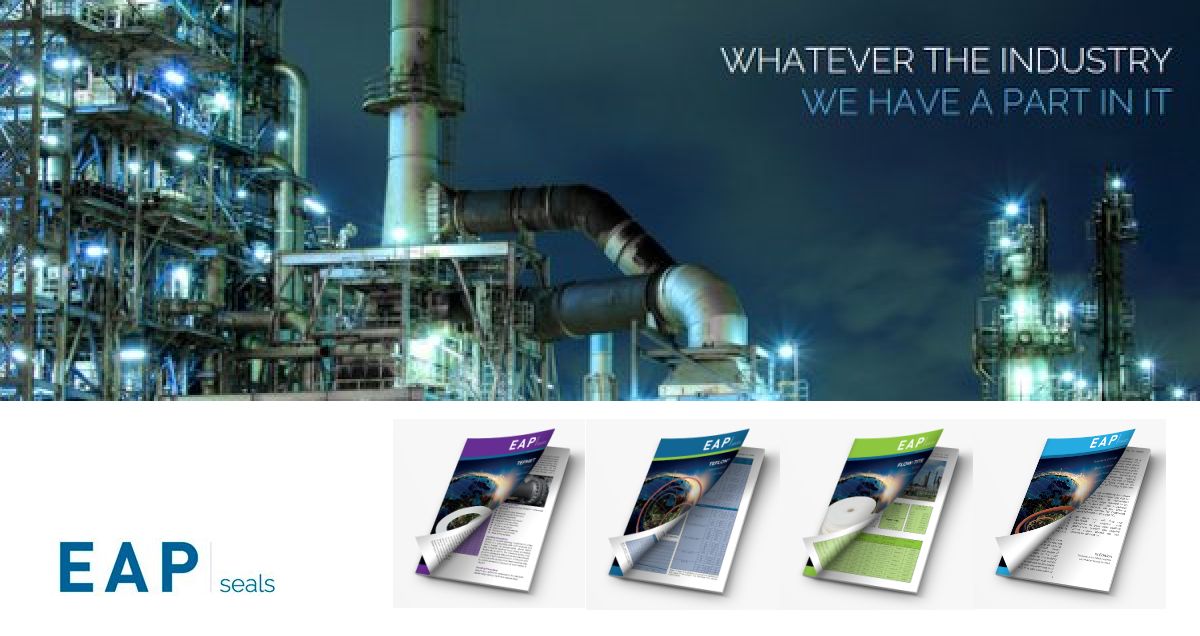
Selecting the proper material for an application requires a general knowledge of what is available for use in our flat wire products and depends on the environment in which the spring/retaining ring is to be used.
Specifying the correct material can prevent additional cost and failure in operation. Carbon steel is the most commonly specified material. Stainless steels, although more costly than carbon steel, provide far superior corrosion resistance and have higher temperature operating limits. Please find below a range of available materials and their characteristics. If you have any questions or require some guidance, please don’t hesitate to contact our engineers on +44 (0)1435 866011 or design@tfc.eu.com.
OIL TEMPERED
SAE 1070-1090 High carbon tempered spring steel is a standard material for spiral retaining rings and wave springs. Tensile strength and yield strength are maximized as a result of the oil tempered martensitic structure.
HARD DRAWN
SAE 1060-1075 High carbon cold drawn spring steel is a standard material for snap rings. Hard drawn carbon steel has no scale as it receives its strength from the drawing process.
In either temper, carbon steel is best suited in applications having a protected environment as it corrodes if not lubricated or atmospherically sealed. Additional corrosion protection can be added with special finishes. Rings and springs are normally supplied with an oil dip finish providing protection during shipment and for shelf storage. Carbon steel is highly magnetic.
Maximum recommended operating temp.: 121°C / 250°F
Colour: various, including blue, black and grey.
302 STAINLESS STEELAMS-5866302 is the standard stainless steel for spiral retaining rings. This widely used material is specified because of its combination of corrosion resistance and physical properties. 302 obtains its spring temper condition by cold working. Though it is categorised as being a non-magnetic stainless, 302 becomes slightly magnetic as a result of cold working. It is not hardenable by heat treatment.
Maximum recommended operating temp.: 204°C / 400°F
Colour: silver-grey.
316 STAINLESS STEELASTM A313 (referenced for chemical composition only).Nearly identical in physical properties and heat resistance to 302, 316 provides additional corrosion resistance, particularly against pitting, due to its molybdenum chemical content. 316 is generally used in food, chemical and sea water applications. 316 exhibits less magnetism than 302. However, as with 302, magnetism increases as the wire is cold reduced. This stainless grade is also not hardenable by heat treatment.
Maximum recommended operating temp.: 204°C / 400°F
Colour: silver-grey.
17-7 Ph/C STAINLESS STEEL, CONDITION Ch900
AMS-5529
Similar in corrosion resistance to type 302, this alloy is used almost exclusively for wave springs, yet offers both high tensile and yield strengths for special ring applications. In fatigue and high stress applications, 17-7 out performs even the finest grade of carbon steel. Spring properties are achieved by precipitation hardening Condition C to Condition CH-900. 17-7 PH C/CH-900 exhibits magnetism similar to high carbon steel.
Maximum recommended operating temp.: 343°C / 650°F
Colour: After precipitation hardening, 17-7 has a blue, brown or silver colour as a result of open-air heat treatment, although passivation provides a bright finish.
INCONEL X-750*
This nickel-chromium alloy is used most commonly in high temperature and corrosive environments. Two commonly specified tempers of Inconel are described below.
SPRING TEMPER
AMS-5699 – conforming to NACE standard MR-01-75
Most commonly, Inconel X-750 is precipitation heat treated to a spring temper condition. The National Association of Corrosion Engineers (NACE) approves this hard temper to specification MR-0175 (Rc50 maximum) for spiral retaining rings and wave springs.
Maximum recommended operating temp.: 371°C / 700°F
NO.1 TEMPER, “Rc35 MAX”
AMS-56991 – conforming to NACE standard MR-01-75
Requires a longer heat treatment than spring temper and has a lower tensile strength.
Maximum recommended operating temp.: 371°C / 700°F
NO.1 TEMPER, AMS-5698
This material is typically used for retaining rings requiring corrosion and heat resistance.
Maximum recommended operating temp.: 538°C / 1000°F
Both spring temper and #1 temper exhibit no magnetism and may be heat treated in either an open air or atmosphere controlled furnace. Open air heat treatment may produce oxidation, which often results in a slight black residue. An atmosphere controlled environment eliminates oxidation and produces a component with no residue.
Colour: blue/silver-grey
A286 ALLOY
AMS-5810
This alloy exhibits similar properties to Inconel X-750. Its spring temper condition is obtained by precipitation hardening. A286 may be heat treated similar to spring temper and #1 temper Inconel. This material exhibits no magnetism.
Maximum recommended operating temp.: 538°C / 1000°F
Colour: blue/silver-grey.
ELGILOY*
AMS-58761 – conforming to NACE standard MR-01-75.
Known for its excellent resistance to corrosive environments, no magnetism, and use at elevated temperatures, this relatively new spring material is now readily available from TFC. Commonly used in oil industry applications, Elgiloy shows improved reliability over other NACE approved materials by resisting sulphide stress cracking. Additionally, Elgiloy is said to out perform “over 600% better than 17-7 PH in load retention at 343°C and provide over 100% more cycles (in fatigue resistance) than carbon steel without breakage.”
Maximum recommended operating temp.: 427°C / 800°F
Colour: Blue-brown in colour as a result of heat treatment.
BERYLLIUM COPPER ALLOY #25
TEMPER TH02 – ASTM b197
Normally specified in a hard temper, this alloy produces excellent spring properties due to a combination of low modulus of elasticity and high ultimate tensile strength. The alloy gains its physical properties by precipitation hardening. In contrast to other copper alloys, beryllium copper has the highest strength and offers remarkable resistance to loss of physical properties at elevated temperatures. Beryllium copper is non-magnetic. Its electrical conductivity is about 2-4 times as great as phosphor bronze.
Maximum recommended operating temp.: 204°C / 400°F
PHOSPHOR BRONZE, GRADE A
Phosphor bronze offers fair spring properties, fair electrical conductivity and is rated a step below beryllium copper in performance. It is purchased in a spring temper condition to maximize spring characteristics. Phosphor bronze is hardenable only by cold working. This material is also non-magnetic.
The finish of a part can also play an important role in its resistance to corrosive environments. Finishes are also very popular in creating an aesthetically pleasing product. Please find a selection of our standard finishes below, should one of these not fit your requirements then please contact us on +44 (0)1435 866011 or Design@tfc.eu.com.
BLACK OXIDE
MIL-DTL-13924, Class 1
This finish provides a flat black finish. Black oxide is intended more for cosmetic appearance than for corrosion resistance.
CADMIUM PLATING
Cadmium Plate, AMS-QQ-P-416, Class 2, Type I Cadmium Plate with Chromate Dip, AMS-QQ-P-416, Class 2, Type II
Cadmium plating is used on carbon steel to increase the corrosion resistance of the product. The process of cadmium plating spiral retaining rings is costly and subjects the ring to the possibility of hydrogen embrittlement. TFC offers stainless steel as the preferable option to cadmium.
OIL DIP
This is the standard finish for all products produced from carbon steel. The oil provides resistance to corrosion in transport and normal storage. The oil dip finish should not be considered a permanent finish.
PASSIVATION
AMS 2700, Method 1, Type 2, Class 3 +AMS-QQ-P-35 Type II
Passivation is an optional cleaning operation for stainless steel. It provides a bright finish and increased corrosion resistance. Passivation dissolves iron particles and other substances, which have become imbedded in the surface of stainless steel during production. If not dissolved, these foreign particles could promote rusting, discolouration or even pitting. In theory, the corrosion resistance of stainless steel is due to the thin, invisible oxide film that completely covers the surface of the ring and prevents further oxidation. Removing the contaminates prevents breaks in the oxide film for optimum corrosion resistance.
ZINC PHOSPHATE
MIL-DTL-16232, Type Z, Class 2
This finish is sometimes referred to as “Parkerizing” and appears gray-black in colour. The corrosion resistance of phosphate is superior to black oxide but inferior to cadmium plating or stainless steel. Phosphate can not be applied to stainless steel.
VAPOUR DEGREASE / ULTRASONIC CLEAN
This is the standard cleaning and finish for all stainless steels. The process removes oil and other organic compounds from the material surface by use of a chlorinated solvent. The solvent effectively removes oil and grease from the exposed surfaces of the ring or spring. Ultrasonics are used in forcing the solvent to act between the turns of the ring.
VIBRATORY DEBURR / HAND DEBURR
Though all circumferential surfaces and edges of retaining rings are smooth, sharp corners are always present on the gap ends due to the cut-off operation. To break the sharp corners, achieving a blended/smooth surface finish, rings may either be vibratory or hand deburred to meet your specifications.
MANUFACTURING SPECIFICATIONS
Regulating agencies have prepared several specifications for sheet and strip materials, but few have been published for flat wire. Smalley procures its material to internally generated specifications. In addition to controlling tensile strength, rigid inspection procedures have been established to check for edge contour, physical imperfections, camber, cross-section and chemical composition.
MATERIAL TESTING – ULTIMATE TENSILE STRENGTH
To check the spring properties of wire, Ultimate Tensile Strength is the preferred test method over hardness because spring temper flat wire develops different hardness at various indentation points. As a result of cold rolling, the top and bottom surfaces (“A”) become harder as they are more severely worked than the round edge areas (“B”). Tensile tests are more consistent as they evaluate the entire cross-section, not a single point as in a hardness test.
Need branded construction industry products with fast response and delivery to site? visit our sister company, Cavalier Fasteners Ltd.
Latest News From TFC
Catch up on all of the latest supply chain, fastener industry and company news from TFC Ltd.
Catch up on all of the latest supply chain, fastener industry and company news from TFC Ltd.






















